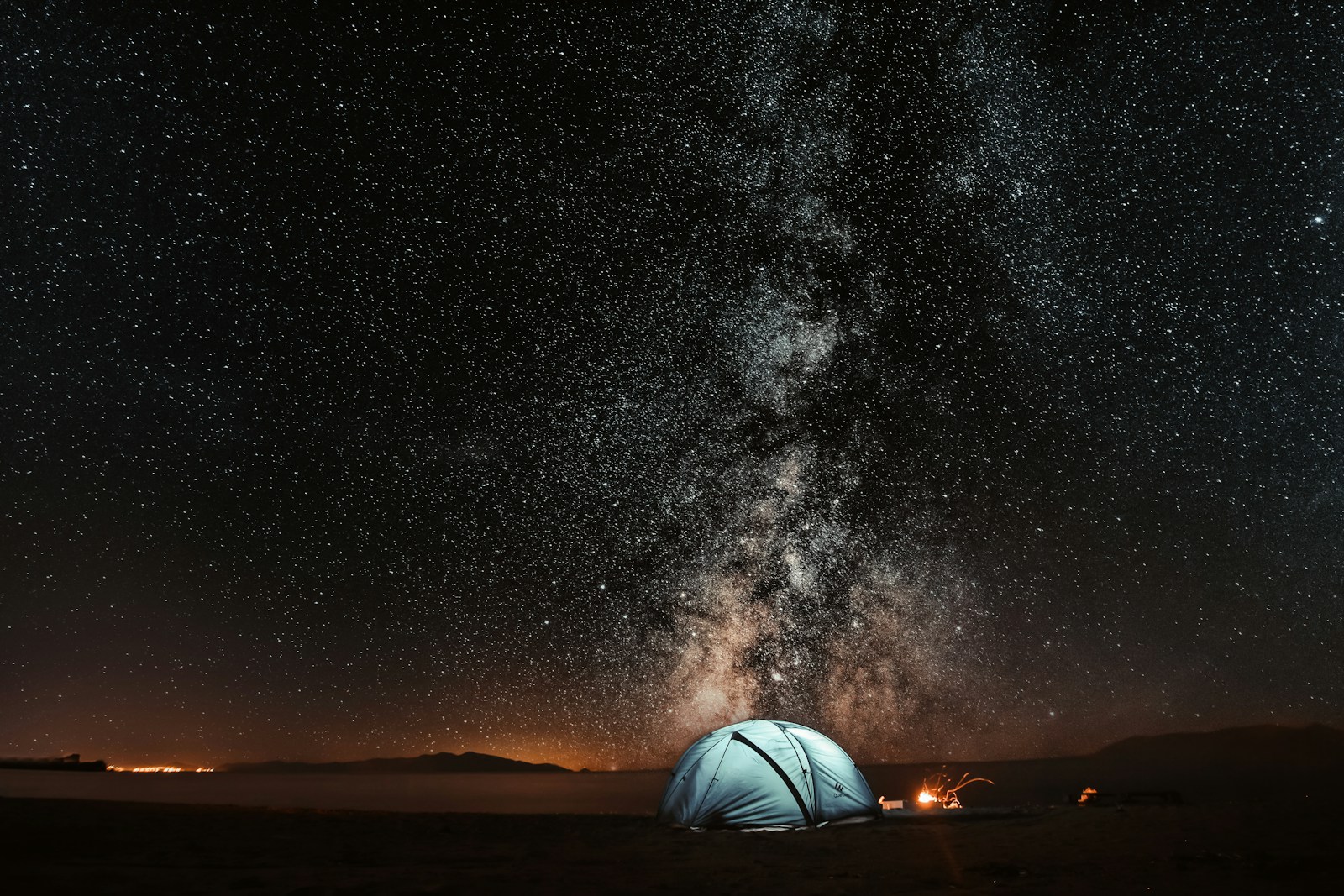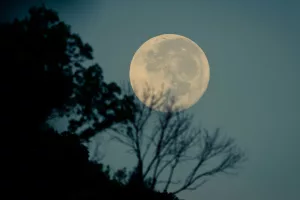Stargazing is a mesmerizing activity that connects us with the vast, mysterious universe beyond our everyday lives. Around the globe, certain locations stand out as havens for celestial observation, boasting dark, unpolluted skies that allow the stars to shine in all their brilliance. These destinations provide more than just a view of the stars—they offer immersive experiences that deepen our appreciation of the cosmos. Whether you’re an astronomy enthusiast or simply a lover of the night sky, these 14 remarkable locations promise unforgettable stargazing adventures.
1. Mauna Kea, Hawaii
Mauna Kea, situated on the Big Island of Hawaii, is a stargazer’s paradise. Its towering elevation of over 13,800 feet above sea level means the air is thinner and clearer, free from atmospheric distortions that often hinder celestial observation. The minimal light pollution on the island further enhances visibility, allowing the stars, planets, and even distant galaxies to shine brightly against the dark canvas of the night sky.
The summit of Mauna Kea is home to some of the world’s most advanced telescopes, attracting astronomers and researchers from across the globe. Visitors can join guided stargazing tours or stop by the Mauna Kea Visitor Information Station to use telescopes and gain insights into the universe from experts. Whether marveling at the Milky Way or catching glimpses of Saturn’s rings, stargazing at Mauna Kea is a transcendent experience that leaves visitors in awe of the universe’s scale and beauty.
2. Atacama Desert, Chile
The Atacama Desert, renowned as the driest non-polar desert on Earth, offers some of the clearest and darkest skies imaginable. With its high altitude, arid conditions, and virtually nonexistent light pollution, this desert provides unparalleled opportunities for stargazing. The region’s unique atmosphere allows for exceptional visibility, enabling observers to see stars and celestial bodies that are often obscured elsewhere.
The Atacama is home to several cutting-edge observatories, including the ALMA Observatory, where scientists study the origins of the universe. Visitors can participate in stargazing tours led by astronomers who provide insights into constellations, planets, and distant nebulae. The stark, otherworldly landscape of the desert enhances the experience, creating a sense of timelessness as you gaze at the cosmos.
3. NamibRand Nature Reserve, Namibia
NamibRand Nature Reserve in Namibia is one of the few designated International Dark Sky Reserves in the world, known for its pristine, light-pollution-free skies. The reserve’s expansive landscapes and clear, dry air create ideal conditions for stargazing, allowing visitors to see the Milky Way in unparalleled detail.
Here, the stars seem so close you could almost touch them. The reserve offers guided stargazing experiences where experts explain the stories behind the constellations and the science of celestial phenomena. Guests staying at lodges within the reserve can enjoy private observatory sessions or simply lie back and marvel at the sheer brilliance of the night sky. Stargazing at NamibRand is more than just an activity—it’s a humbling journey into the vastness of the universe.
4. Cherry Springs State Park, Pennsylvania
Cherry Springs State Park is a gem for stargazing enthusiasts in the northeastern United States. Designated as a Gold Level Dark Sky Park by the International Dark-Sky Association, it offers some of the darkest skies east of the Mississippi River. On clear nights, the park provides breathtaking views of the Milky Way, constellations, and even distant galaxies.
The park hosts astronomy events and workshops where visitors can learn to identify celestial objects and use telescopes. Its Astronomy Field is specifically designed for stargazing, featuring level ground and unobstructed views of the sky. The quiet, forested setting adds to the charm, making Cherry Springs State Park a perfect destination for both amateur astronomers and those seeking a tranquil escape under the stars.
5. Aoraki Mackenzie International Dark Sky Reserve, New Zealand
Aoraki Mackenzie International Dark Sky Reserve is the largest dark sky reserve in the world, encompassing Mount Cook National Park and the Mackenzie Basin. This region is celebrated for its pristine skies, free from light pollution, and its dramatic landscapes of mountains, lakes, and valleys.
Visitors can experience the southern hemisphere’s unique night sky, including the Southern Cross, the Magellanic Clouds, and other celestial wonders not visible from northern latitudes. Stargazing tours often combine the beauty of the night sky with Maori legends and stories, adding cultural depth to the experience. The reserve’s commitment to preserving its natural darkness ensures that this celestial wonderland remains a treasure for generations to come.
6. Death Valley National Park, California
While Death Valley is known for its scorching daytime temperatures, its nights reveal a tranquil, star-filled sky that ranks among the darkest in the United States. The park’s vast, open landscape provides uninterrupted views of the heavens, where thousands of stars and constellations come into sharp focus.
Ranger-led stargazing programs and astronomy festivals are held regularly, offering visitors the chance to learn about celestial navigation, meteor showers, and other phenomena. The contrast between the desolate beauty of the desert and the vibrant night sky makes stargazing in Death Valley a uniquely meditative experience.
7. Jasper National Park, Canada
Jasper National Park, located in the heart of the Canadian Rockies, is a designated Dark Sky Preserve that protects the natural darkness of its skies. The park’s remote location and high elevation make it a prime spot for stargazing, offering stunning views of the Milky Way, planets, and even the occasional aurora borealis.
Visitors can participate in the Jasper Dark Sky Festival, an annual event featuring guest speakers, stargazing workshops, and family-friendly activities. Beyond the festival, the park’s scenic trails and viewpoints offer countless opportunities to immerse yourself in the beauty of the night sky. Jasper’s combination of natural splendor and celestial wonder creates an unforgettable stargazing experience.
8. La Palma, Canary Islands
La Palma, part of Spain’s Canary Islands, is renowned as one of the best stargazing destinations in the world. Its high-altitude observatories, such as the Roque de los Muchachos Observatory, are equipped with some of the most advanced telescopes for astronomical research.
Visitors can take guided tours of the observatories or join stargazing excursions led by local experts. The island’s volcanic landscapes and crystal-clear skies enhance the experience, making it feel like you’re standing on another planet. Whether you’re observing distant galaxies or simply marveling at the brilliance of the Milky Way, La Palma offers a celestial journey like no other.
9. Exmoor National Park, England
Exmoor National Park was the first place in Europe to be designated as an International Dark Sky Reserve. Its rolling hills and open landscapes provide ideal conditions for stargazing, free from the glare of city lights.
The park offers guided night walks, stargazing events, and educational programs that introduce visitors to the wonders of the cosmos. Whether you’re using a telescope or simply lying on a blanket under the stars, Exmoor provides a serene and magical setting for connecting with the universe.
10. Big Bend National Park, Texas
Big Bend National Park, located in the remote desert of southwest Texas, is a haven for stargazers. Its isolation from major urban areas ensures exceptionally dark skies, where thousands of stars, planets, and constellations are visible to the naked eye.
The park’s rangers host star parties and astronomy programs, guiding visitors through the night sky and sharing insights about celestial phenomena. The vastness of Big Bend’s landscape adds to the experience, creating a sense of awe and wonder as you gaze at the infinite expanse of stars above.
11. Maamturks, Ireland
The Maamturks mountain range in Ireland offers a tranquil and picturesque setting for stargazing. With minimal light pollution and clear skies, it’s an ideal location to observe constellations, planets, and the Milky Way.
Visitors can take advantage of the area’s peaceful atmosphere to enjoy a contemplative stargazing experience. Guided astronomy tours and photography workshops are also available, helping enthusiasts capture the beauty of the night sky. The Maamturks provide a perfect escape for those seeking serenity and a connection with the cosmos.
12. Talampaya National Park, Argentina
Talampaya National Park, a UNESCO World Heritage Site in Argentina, is a breathtaking destination for stargazing. The park’s remote location and rugged landscapes create a dramatic backdrop for observing the night sky, where the Milky Way and constellations shine with extraordinary clarity.
Visitors can join guided stargazing tours that combine astronomy with cultural storytelling, exploring how ancient civilizations interpreted the stars. The park’s unique geology and natural darkness make it a one-of-a-kind destination for connecting with the wonders of the universe.
13. Tenerife, Canary Islands
Tenerife, another jewel of the Canary Islands, is home to the renowned Teide Observatory. The island’s high altitude and stable atmospheric conditions provide excellent visibility for stargazing, making it a top destination for both amateur and professional astronomers.
Guided night tours often include telescope sessions and educational talks about the constellations, planets, and galaxies visible from the island. The striking volcanic landscapes of Tenerife add to the experience, making stargazing here both scientifically enriching and visually stunning.
14. Torrance Barrens Dark-Sky Preserve, Ontario
Torrance Barrens Dark-Sky Preserve, located in Ontario, Canada, is a peaceful haven for stargazers. As a designated dark-sky preserve, the site offers unspoiled views of the night sky, free from light pollution.
Visitors can join guided night sky tours or attend public stargazing events, where they can learn about constellations, meteor showers, and other celestial wonders. The preserve’s serene environment makes it an ideal place to connect with the cosmos, whether you’re observing through a telescope or simply gazing at the stars.
Conclusion
Stargazing is more than just a pastime—it’s an opportunity to connect with the universe and marvel at the beauty and mystery of the cosmos. Each of these 14 destinations offers a unique experience, combining natural beauty, scientific exploration, and a sense of wonder. Whether you’re seeking the solitude of a desert, the charm of a mountain range, or the expertise of a world-class observatory, these locations provide unforgettable opportunities to lose yourself in the magic of the night sky.making them perfect for anyone looking to explore the beauty of the night sky. Whether you’re an avid astronomer or simply someone who appreciates the serene beauty of a starlit sky, here are 14 premier destinations you should consider for an unparalleled stargazing adventure.




